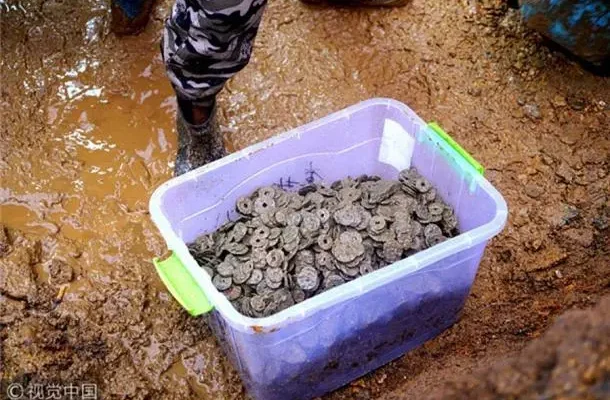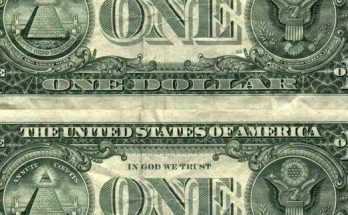When a villager living in the Jiangxi province of China started to work on the foundation of his home, he couldn’t have imagined what he would find. The discovery of a hoard of coins soon led neighbors to join in on the man’s “treasure hunt.” The results of their dig? A staggering 5.6 tons of Song Dynasty coins. But now archaeologists are struggling to pinpoint who could have hidden them there.
Specifically, China.org.cn reports the massive hoard of coins was found by a homeowner working on the foundations of his house in Fuliang county of Jingdezhen city. When his neighbors saw what he was up to, they too joined in excavations. Archaeologists were soon added to the mix. Upon completion, the total number of coins was tallied at approximately 300,000 pieces.
According to South China Morning Post, Jingdezhen has been called the “capital of porcelain” since the 3rd century, highlighting the economic importance of the site.

A container showing some of the coins found during construction work on a house in Jiangxi province. (VCG)
Folk tales in the area have linked the coins to a landlord who lived there approximately 1,000 years ago. However, according to China Daily, archaeologists disagree due to the small value of the pieces. Feng Ruqin, curator of Fuliang Museum, told the media that archaeologists are looking at two possible scenarios for why the coins were hidden at that location: a local business group or social organization hid the coins for future use, or they were stored by a small bank which had traded the coins for “more portable assets, such as gold, silver or paper money.”
An early analysis of the coins suggests they were made sometime in the Song Dynasty (960-1279). People living in the area were suffering from unstable times when the coins were hidden. War and migration were prevalent, and it seems the coins were quickly buried away for protection from these problems.

Excavating the coins. (jxnews.com.cn)
The Song Dynasty also saw the emergence of banknotes in China. That happened between 600 and 1455. By the Ming Dynasty, banknotes were made of handmade mulberry bark paper and printed using a carved woodblock – which Ancient Origins writer Theodoros points out is “a technology that has played an important role throughout Chinese history.”
In 2016, Ancient Origins reported that a rare Ming Dynasty banknote was found hidden inside a Chinese wooden sculpture known as a Luohan. That banknote was stamped with three official red seals and provided a threat to any would-be forgers. A note is inscribed on the lower section states,
“Authorized by the Department of Finance, this bank note has the same function of coins, those who use counterfeit bank notes will be beheaded, the whistle-blower will be rewarded 250 Liang silvers plus all the properties of the criminal. The third year of Hong Wu period.”

Example of a Chinese banknote. This artifact dates to the Ming Dynasty (1368–1644). (Public Domain)
Feng said the cleaning, weighing, and categorizing of the coins will take about two or three years. Further details on the origins and nature of the coins may be released then.



